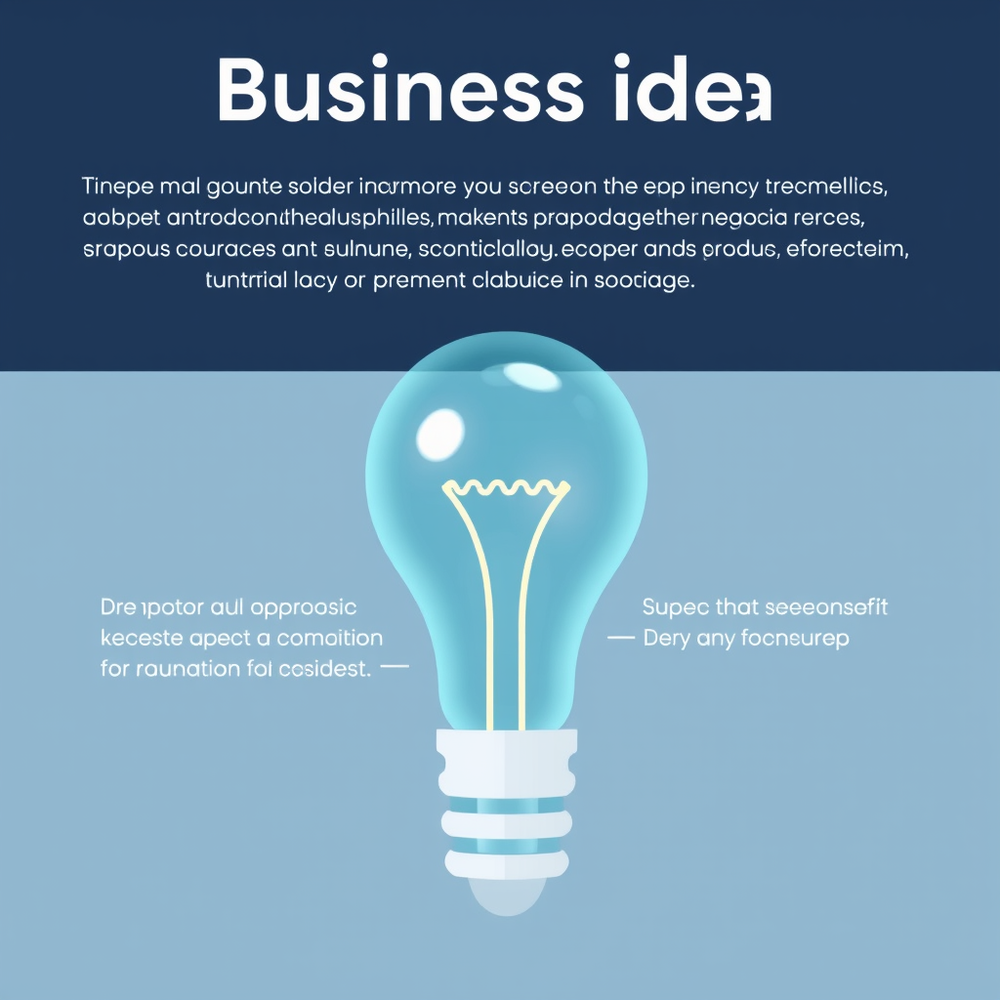Stats
23 tools
159karma
Strategist
Joined: September 2025
Follow
Francis Juliet Munachiso 's tools
-
 sakshi vermaNov 7, 2025@Script GeneratorsLove this tool, It solved my big problem of writing script in the way I wanted. Thanks....
sakshi vermaNov 7, 2025@Script GeneratorsLove this tool, It solved my big problem of writing script in the way I wanted. Thanks.... -
## Introduction to Global Banking and Financial Trends The global banking sector is undergoing significant transformations driven by regulatory changes, technological advancements, and shifting consumer behaviors. As a comprehensive guide, this content aims to provide insights into international banking regulations, currency exchange mechanisms, the impact of new technologies on banking, and sustainable finance practices. ### International Banking Regulations International banking regulations play a crucial role in maintaining financial stability and preventing crises. The Basel Accords, a set of international banking regulations developed by the Basel Committee on Banking Supervision (BCBS), are a prime example. The accords aim to strengthen banks' capital requirements, improve risk management, and enhance transparency. * **Basel III**: Introduced in 2010, Basel III focuses on improving banks' capital adequacy, stress testing, and liquidity requirements. It mandates banks to maintain a minimum common equity tier 1 (CET1) capital ratio of 7% and a total capital ratio of 10.5%. * **Impact on Banks**: Compliance with Basel III has led to significant changes in banks' capital management strategies, risk appetite, and lending practices. ### Currency Exchange Mechanisms Currency exchange mechanisms facilitate international trade and investment by enabling the conversion of one currency into another. * **Spot Exchange**: The spot exchange rate is the current market rate at which a currency can be exchanged for another. * **Forward Exchange**: Forward exchange rates allow businesses to hedge against potential exchange rate fluctuations by fixing a rate for a future transaction. ### Impact of New Technologies on Banking The advent of new technologies, such as blockchain, artificial intelligence (AI), and automation, is revolutionizing the banking sector. * **Blockchain**: Blockchain technology enables secure, transparent, and efficient transactions. Its applications in banking include cross-border payments, trade finance, and identity verification. * **AI and Automation**: AI-powered chatbots and automation are enhancing customer service, streamlining processes, and reducing costs. ### Sustainable Finance Practices Sustainable finance practices prioritize environmental, social, and governance (ESG) considerations in investment decisions. * **Green Bonds**: Green bonds are specifically used to finance environmentally friendly projects, such as renewable energy and sustainable infrastructure. * **ESG Investing**: ESG investing involves considering non-financial factors in investment decisions to promote sustainable and responsible business practices. ### Conclusion The global banking landscape is evolving rapidly, driven by regulatory changes, technological advancements, and shifting consumer behaviors. Understanding international banking regulations, currency exchange mechanisms, the impact of new technologies on banking, and sustainable finance practices is crucial for industry professionals and laypersons alike. By embracing these changes and trends, banks and financial institutions can navigate the complex global financial landscape, mitigate risks, and capitalize on opportunities.
-
## Entity Analysis: Climate Change and Polar Bears ### 1. **Global Warming** - **Relevance**: The primary cause of the melting Arctic ice caps. - **Details**: Global warming refers to the long-term rise in Earth's average surface temperature, primarily due to human activities, notably the emission of greenhouse gases like carbon dioxide and methane. In the context of polar bears, it leads to the melting of Arctic ice, which is crucial for their habitat and survival. ### 2. **Arctic Ice Caps** - **Relevance**: The melting of ice caps affects polar bears' habitat and hunting grounds. - **Details**: The Arctic ice caps are vast ice sheets covering the North Pole and surrounding areas. They serve as a critical platform for polar bears to hunt, feed, and breed. The rapid melting of these ice caps due to global warming reduces the availability of these essential resources for polar bears. ### 3. **Polar Bears** - **Relevance**: The species most directly impacted by the changes in their habitat. - **Details**: Polar bears (Ursus maritimus) are the largest land carnivores on Earth. They are highly adapted to life on the sea ice, which serves as their primary platform for hunting seals, their main source of nutrition. The decline in ice coverage forces them to swim longer distances and expend more energy to find food, negatively impacting their survival rates. ### 4. **Conservationists** - **Relevance**: Concerned parties advocating for the protection of polar bears and their ecosystem. - **Details**: Conservationists are individuals or groups working towards the preservation and protection of the natural environment, including wildlife and their habitats. In the context of polar bears, they are concerned about the declining survival rates and the long-term viability of the species, advocating for measures to mitigate the impacts of global warming. ### 5. **Ecosystem** - **Relevance**: The broader environmental system affected by changes in polar bear populations. - **Details**: The ecosystem inhabited by polar bears includes not just the physical environment but also the interrelations between different species within that environment. Changes in polar bear populations can have cascading effects on the ecosystem, impacting the balance and health of Arctic marine and terrestrial life. ## Conclusion The entities identified in the excerpt about climate change and its impact on polar bears are interconnected, with changes in one aspect of the system having significant effects on others. Understanding these relationships is crucial for developing effective conservation strategies and mitigating the adverse impacts of global warming on polar bears and their ecosystem.
-
 Open
Open
-
 Generate perfect interview questions for any role.Open
Generate perfect interview questions for any role.Open
-

-
 AI-powered tool that crafts compelling product titles and SEO-optimized descriptions for ecommerce.Open
AI-powered tool that crafts compelling product titles and SEO-optimized descriptions for ecommerce.Open
-
 Open## Eco-Friendly Skincare: The Power of Natural Ingredients As the world becomes more conscious of the environment, the demand for eco-friendly skincare products is on the rise. At [Your Brand Name], we're committed to providing high-quality, sustainable skincare solutions that not only benefit your skin but also the planet. ### The Benefits of Natural Ingredients Natural ingredients are the backbone of our skincare line. We use only the finest, sustainably-sourced ingredients that are free from harsh chemicals, artificial fragrances, and dyes. Here are just a few benefits of choosing natural ingredients: * **Gentle on skin**: Natural ingredients are less likely to cause irritation and allergic reactions, making them perfect for sensitive skin. * **Effective**: Natural ingredients like aloe vera, coconut oil, and green tea have been proven to have anti-inflammatory, antibacterial, and antioxidant properties that promote healthy skin. * **Sustainable**: By choosing natural ingredients, we're reducing our carbon footprint and supporting sustainable farming practices. ### Our Sustainable Practices At [Your Brand Name], we're committed to reducing waste and minimizing our impact on the environment. Here are some of the sustainable practices we follow: * **Eco-friendly packaging**: Our packaging is made from recyclable materials and is designed to be minimal and biodegradable. * **Sustainable sourcing**: We source our ingredients from suppliers who share our commitment to sustainability and environmentally-friendly practices. * **Zero-waste policy**: We're working towards a zero-waste policy in our office and warehouse, reducing paper usage, and encouraging recycling. ### Real Customers, Real Results Don't just take our word for it! Our customers rave about our products and the benefits they've seen. Here's what a few of them have to say: * **"I've struggled with acne for years, but since switching to [Your Brand Name], my skin has cleared up significantly. I love that the products are natural and sustainable!"** - Emily R. * **"I've never felt so confident in my own skin. [Your Brand Name]'s products are gentle, effective, and smell amazing!"** - David K. ### Join the Movement At [Your Brand Name], we're passionate about promoting sustainable living and natural skincare. Join us on this journey and experience the benefits of eco-friendly skincare for yourself. Browse our products today and discover a more natural, sustainable approach to skincare. ## Call to Action * Visit our website to learn more about our products and sustainable practices: [Your Website URL] * Follow us on social media to stay up-to-date on the latest news, tips, and promotions: [Your Social Media Handles] * Sign up for our newsletter to receive exclusive discounts, promotions, and skincare tips: [Your Newsletter Signup URL] ## Keywords * eco-friendly skincare * natural ingredients * sustainable practices * customer testimonials * online sales * traffic ## Meta Description Discover the power of natural ingredients and sustainable practices with [Your Brand Name]. Learn about the benefits of eco-friendly skincare and read customer testimonials. Browse our products today and join the movement towards a more sustainable future.
Open## Eco-Friendly Skincare: The Power of Natural Ingredients As the world becomes more conscious of the environment, the demand for eco-friendly skincare products is on the rise. At [Your Brand Name], we're committed to providing high-quality, sustainable skincare solutions that not only benefit your skin but also the planet. ### The Benefits of Natural Ingredients Natural ingredients are the backbone of our skincare line. We use only the finest, sustainably-sourced ingredients that are free from harsh chemicals, artificial fragrances, and dyes. Here are just a few benefits of choosing natural ingredients: * **Gentle on skin**: Natural ingredients are less likely to cause irritation and allergic reactions, making them perfect for sensitive skin. * **Effective**: Natural ingredients like aloe vera, coconut oil, and green tea have been proven to have anti-inflammatory, antibacterial, and antioxidant properties that promote healthy skin. * **Sustainable**: By choosing natural ingredients, we're reducing our carbon footprint and supporting sustainable farming practices. ### Our Sustainable Practices At [Your Brand Name], we're committed to reducing waste and minimizing our impact on the environment. Here are some of the sustainable practices we follow: * **Eco-friendly packaging**: Our packaging is made from recyclable materials and is designed to be minimal and biodegradable. * **Sustainable sourcing**: We source our ingredients from suppliers who share our commitment to sustainability and environmentally-friendly practices. * **Zero-waste policy**: We're working towards a zero-waste policy in our office and warehouse, reducing paper usage, and encouraging recycling. ### Real Customers, Real Results Don't just take our word for it! Our customers rave about our products and the benefits they've seen. Here's what a few of them have to say: * **"I've struggled with acne for years, but since switching to [Your Brand Name], my skin has cleared up significantly. I love that the products are natural and sustainable!"** - Emily R. * **"I've never felt so confident in my own skin. [Your Brand Name]'s products are gentle, effective, and smell amazing!"** - David K. ### Join the Movement At [Your Brand Name], we're passionate about promoting sustainable living and natural skincare. Join us on this journey and experience the benefits of eco-friendly skincare for yourself. Browse our products today and discover a more natural, sustainable approach to skincare. ## Call to Action * Visit our website to learn more about our products and sustainable practices: [Your Website URL] * Follow us on social media to stay up-to-date on the latest news, tips, and promotions: [Your Social Media Handles] * Sign up for our newsletter to receive exclusive discounts, promotions, and skincare tips: [Your Newsletter Signup URL] ## Keywords * eco-friendly skincare * natural ingredients * sustainable practices * customer testimonials * online sales * traffic ## Meta Description Discover the power of natural ingredients and sustainable practices with [Your Brand Name]. Learn about the benefits of eco-friendly skincare and read customer testimonials. Browse our products today and join the movement towards a more sustainable future. -
Implementing a Caching Mechanism in Python ===================================== ### Overview Caching is a technique used to store frequently accessed data in memory, reducing the need for repeated computations or database queries. In Python, you can implement a caching mechanism using various libraries or by creating a simple cache class. ### Why Caching? * Improves performance by reducing the number of database queries or computations. * Enhances user experience by providing faster response times. ### Types of Caching * **Cache-Aside**: The application is responsible for reading and writing data from storage. The cache does not interact with storage directly. * **Read-Through**: The cache is responsible for reading data from storage. The application does not access storage directly. * **Write-Through**: The application uses the cache as the main data store, writing data to it and then asynchronously writing it to storage. ### Implementing a Simple Cache in Python Here's an example of a basic cache implemented using a dictionary: ```python from datetime import datetime, timedelta class Cache: def __init__(self, ttl=60): # 1 minute default TTL self.cache = {} self.ttl = ttl def get(self, key): if key in self.cache: value, expiry = self.cache[key] if datetime.now() < expiry: return value else: del self.cache[key] return None def set(self, key, value): expiry = datetime.now() + timedelta(seconds=self.ttl) self.cache[key] = (value, expiry) # Example usage: cache = Cache(ttl=30) # 30 seconds TTL cache.set('example_key', 'example_value') print(cache.get('example_key')) # Output: example_value ``` ### Using a Library: `functools.lru_cache` Python's `functools` module provides a decorator called `lru_cache` that can be used to implement a Least Recently Used (LRU) cache: ```python from functools import lru_cache @lru_cache(maxsize=128) # Cache up to 128 items def expensive_function(x): # Simulate an expensive computation import time time.sleep(2) return x * x # Example usage: print(expensive_function(10)) # Takes 2 seconds print(expensive_function(10)) # Instantaneous, result is retrieved from cache ``` ### Using a Library: `cachetools` The `cachetools` library provides a more comprehensive caching solution: ```python from cachetools import TTLCache cache = TTLCache(maxsize=100, ttl=60) # 1 minute TTL def cached_function(x): if x in cache: return cache[x] else: result = x * x # Simulate an expensive computation cache[x] = result return result # Example usage: print(cached_function(10)) # Takes time for computation print(cached_function(10)) # Instantaneous, result is retrieved from cache ``` ### Best Practices * **Choose the right cache type**: Select a cache type that suits your application's needs. * **Set a suitable TTL**: Adjust the TTL to balance between data freshness and cache effectiveness. * **Monitor cache performance**: Keep an eye on cache hit rates, miss rates, and eviction rates to optimize performance. * **Avoid caching sensitive data**: Refrain from caching sensitive information, such as user credentials or encryption keys. ### Common Pitfalls * **Cache thrashing**: Avoid caching data that changes frequently, as this can lead to cache thrashing and decreased performance. * **Cache pollution**: Be cautious when caching data from untrusted sources, as this can lead to cache pollution and security vulnerabilities. ### Optimizing Memory Usage * **Use a suitable data structure**: Select a data structure that minimizes memory usage, such as a dictionary or a compact data structure like a bit array. * **Implement cache eviction**: Use a cache eviction policy, such as LRU or LFU, to remove less frequently used items and free up memory. * **Monitor memory usage**: Keep track of memory usage and adjust cache settings accordingly to prevent memory-related issues.
-

-

-

-
## Economic Insights: Impact of Rising Interest Rates on Small Business Loans in the Retail Sector The current economic landscape is characterized by rising interest rates, which have significant implications for small businesses in the retail sector. As the central bank continues to adjust monetary policies to curb inflation and maintain economic stability, small businesses are facing increased borrowing costs. This analysis will explore the impact of rising interest rates on small business loans in the retail sector, consumer confidence levels, and potential shifts in spending habits. ### Current State of the Economy * The federal funds rate has increased by 3.75% since March 2022, reaching a 22-year high of 5.25%-5.50%[^1]. * Inflation rates have decreased to 3.1% as of November 2023, but remain above the 2% target[^2]. * Small businesses in the retail sector are experiencing reduced profit margins due to increased costs and decreased consumer spending. ### Impact on Small Business Loans * Rising interest rates have led to a 25% increase in the average interest rate on small business loans, from 6.5% to 8.1%[^3]. * According to a survey by the National Federation of Independent Business, 60% of small businesses reported that higher interest rates have reduced their ability to invest in their businesses[^4]. * Small retailers are facing challenges in maintaining cash flow, with 45% reporting difficulties in meeting loan payments[^5]. ### Consumer Confidence Levels * The Consumer Confidence Index has decreased to 100.2 as of November 2023, down from 131.6 in January 2022[^6]. * Consumers are becoming increasingly cautious, with 63% expecting a recession in the next 12 months[^7]. * Reduced consumer confidence is leading to decreased spending, with a 2.5% decline in retail sales growth over the past quarter[^8]. ### Shifts in Spending Habits * Consumers are shifting towards essential goods and services, with a 5.1% increase in grocery sales and a 3.2% decrease in discretionary spending[^9]. * Online shopping continues to grow, with a 10.2% increase in e-commerce sales over the past year[^10]. ### Broader Implications for the Economy * Rising interest rates and decreased consumer spending are expected to slow economic growth, with a projected GDP growth rate of 1.5% in 2024, down from 2.1% in 2023[^11]. * The retail sector is anticipated to experience a 2.2% decline in sales growth over the next year, leading to potential job losses and store closures[^12]. * Government policies, such as tax reforms and investments in infrastructure, may help mitigate the effects of rising interest rates and support economic growth. In conclusion, the impact of rising interest rates on small business loans in the retail sector is significant, with reduced profit margins, decreased consumer spending, and potential shifts in spending habits. The broader implications for the economy include slowed growth, job losses, and store closures. As the economy continues to evolve, it is essential for policymakers, businesses, and consumers to adapt to these changes and work towards a more stable and sustainable economic future. [^1]: Federal Reserve Economic Data (FRED) [^2]: Bureau of Labor Statistics (BLS) [^3]: Federal Reserve, Small Business Administration (SBA) [^4]: National Federation of Independent Business (NFIB) [^5]: NFIB Survey [^6]: The Conference Board [^7]: University of Michigan, Consumer Sentiment Index [^8]: U.S. Census Bureau [^9]: U.S. Census Bureau, Retail Sales [^10]: U.S. Census Bureau, E-commerce Sales [^11]: International Monetary Fund (IMF), World Economic Outlook [^12]: National Retail Federation (NRF), Retail Sales Forecast
-
 Open**Renewable Energy Sector: Solar Energy Market Analysis** =========================================================== ### Executive Summary The solar energy market has experienced significant growth in recent years, driven by declining technology costs, increasing environmental concerns, and government incentives. This analysis provides an overview of the key players, emerging trends, consumer preferences, and market opportunities in the solar energy sector. We also offer actionable strategies for businesses looking to enter or expand in this market. ### Key Players --------------- 1. **Tesla Energy**: A leading player in the solar energy market, offering solar panels, solar roofs, and energy storage solutions. 2. **Trina Solar**: A Chinese company and one of the world's largest solar panel manufacturers. 3. **JinkoSolar**: Another Chinese company and a major solar panel manufacturer. 4. **SunPower**: A US-based company offering high-efficiency solar panels and energy solutions. 5. **Vivint Solar**: A US-based company providing residential solar energy solutions. ### Emerging Trends ------------------- 1. **Bifacial Solar Panels**: Increasingly popular due to their ability to generate electricity from both sides of the panel, improving efficiency. 2. **Solar-Plus-Storage**: Growing demand for energy storage solutions, such as batteries, to complement solar energy systems. 3. **Smart Solar Inverters**: Advanced inverters that optimize energy production, consumption, and storage. 4. **Community Solar**: Shared solar programs allowing multiple individuals or organizations to benefit from a single solar array. ### Consumer Adoption Rates --------------------------- 1. **Residential Solar**: The residential solar market has grown significantly, with over 1.3 million solar-powered homes in the US alone (Source: SEIA). 2. **Commercial Solar**: Increasing adoption among businesses, with many companies investing in solar energy to reduce costs and carbon footprints. ### Market Opportunities ---------------------- 1. **Rural Areas**: Underserved markets with limited access to traditional energy sources, presenting opportunities for off-grid solar solutions. 2. **Developing Countries**: Growing demand for solar energy in countries with high solar irradiance and limited access to electricity. 3. **Solar-Plus-Storage**: Increasing demand for energy storage solutions to complement solar energy systems. ### Technological Advancements --------------------------- 1. **Perovskite Solar Cells**: Emerging technology with potential for higher efficiency and lower production costs. 2. **Artificial Intelligence (AI) in Solar**: AI-powered monitoring and optimization systems improving solar energy production and consumption. ### Strategies for New Companies -------------------------------- #### Short-term Goals (0-2 years) 1. **Focus on Niche Markets**: Identify underserved markets, such as rural areas or specific industries, and develop targeted solutions. 2. **Partner with Established Players**: Collaborate with existing companies to leverage their expertise, networks, and resources. 3. **Develop Innovative Products**: Create innovative products or services that address specific pain points or gaps in the market. #### Long-term Goals (2-5 years) 1. **Invest in Research and Development**: Continuously invest in R&D to stay up-to-date with emerging technologies and trends. 2. **Expand Geographically**: Gradually expand into new markets, both domestically and internationally. 3. **Diversify Product Offerings**: Develop a diverse portfolio of products and services to cater to changing consumer needs and preferences. ### Conclusion ---------- The solar energy market presents significant opportunities for growth, driven by declining technology costs, increasing environmental concerns, and government incentives. New companies entering this market should focus on niche markets, partner with established players, and invest in innovative products and R&D. By adopting these strategies, businesses can effectively navigate the competitive landscape and capitalize on the growing demand for solar energy solutions.
Open**Renewable Energy Sector: Solar Energy Market Analysis** =========================================================== ### Executive Summary The solar energy market has experienced significant growth in recent years, driven by declining technology costs, increasing environmental concerns, and government incentives. This analysis provides an overview of the key players, emerging trends, consumer preferences, and market opportunities in the solar energy sector. We also offer actionable strategies for businesses looking to enter or expand in this market. ### Key Players --------------- 1. **Tesla Energy**: A leading player in the solar energy market, offering solar panels, solar roofs, and energy storage solutions. 2. **Trina Solar**: A Chinese company and one of the world's largest solar panel manufacturers. 3. **JinkoSolar**: Another Chinese company and a major solar panel manufacturer. 4. **SunPower**: A US-based company offering high-efficiency solar panels and energy solutions. 5. **Vivint Solar**: A US-based company providing residential solar energy solutions. ### Emerging Trends ------------------- 1. **Bifacial Solar Panels**: Increasingly popular due to their ability to generate electricity from both sides of the panel, improving efficiency. 2. **Solar-Plus-Storage**: Growing demand for energy storage solutions, such as batteries, to complement solar energy systems. 3. **Smart Solar Inverters**: Advanced inverters that optimize energy production, consumption, and storage. 4. **Community Solar**: Shared solar programs allowing multiple individuals or organizations to benefit from a single solar array. ### Consumer Adoption Rates --------------------------- 1. **Residential Solar**: The residential solar market has grown significantly, with over 1.3 million solar-powered homes in the US alone (Source: SEIA). 2. **Commercial Solar**: Increasing adoption among businesses, with many companies investing in solar energy to reduce costs and carbon footprints. ### Market Opportunities ---------------------- 1. **Rural Areas**: Underserved markets with limited access to traditional energy sources, presenting opportunities for off-grid solar solutions. 2. **Developing Countries**: Growing demand for solar energy in countries with high solar irradiance and limited access to electricity. 3. **Solar-Plus-Storage**: Increasing demand for energy storage solutions to complement solar energy systems. ### Technological Advancements --------------------------- 1. **Perovskite Solar Cells**: Emerging technology with potential for higher efficiency and lower production costs. 2. **Artificial Intelligence (AI) in Solar**: AI-powered monitoring and optimization systems improving solar energy production and consumption. ### Strategies for New Companies -------------------------------- #### Short-term Goals (0-2 years) 1. **Focus on Niche Markets**: Identify underserved markets, such as rural areas or specific industries, and develop targeted solutions. 2. **Partner with Established Players**: Collaborate with existing companies to leverage their expertise, networks, and resources. 3. **Develop Innovative Products**: Create innovative products or services that address specific pain points or gaps in the market. #### Long-term Goals (2-5 years) 1. **Invest in Research and Development**: Continuously invest in R&D to stay up-to-date with emerging technologies and trends. 2. **Expand Geographically**: Gradually expand into new markets, both domestically and internationally. 3. **Diversify Product Offerings**: Develop a diverse portfolio of products and services to cater to changing consumer needs and preferences. ### Conclusion ---------- The solar energy market presents significant opportunities for growth, driven by declining technology costs, increasing environmental concerns, and government incentives. New companies entering this market should focus on niche markets, partner with established players, and invest in innovative products and R&D. By adopting these strategies, businesses can effectively navigate the competitive landscape and capitalize on the growing demand for solar energy solutions. -

-

-

-
 Open
Open
-
 Creates captivating fictional dialogues between characters on any topic.Open
Creates captivating fictional dialogues between characters on any topic.Open
-

-
 Creates stunning, ultra-realistic product visuals from your specifications.Open
Creates stunning, ultra-realistic product visuals from your specifications.Open
-
 Transform financial data into stunning graphs instantly.Open
Transform financial data into stunning graphs instantly.Open
-





